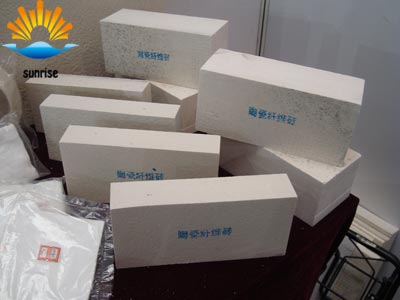Do you know the AZS fused cast brick construction technology of Sunrise Refractory?
2019-11-26 16:13:20
The raw materials for making AZS bricks are light alumina burners, zircons and waste clinker. The alumina powder is lightly burned at 1100 ° C, and the fine powder controlled to less than 0.088mm accounts for 50 ~ 70%. The moisture does not exceed 2%. Crush the waste clinker of the same material to the required particle size for use. The ingredients are as follows: light-burned alumina powder 50.3%, zirconite concentrate 46.1%, sodium carbonate 2.2%, borax 1.4%, and clinker 20-30%. The powder is melted in a three-phase electric arc furnace. The working current is 2200A, the working voltage is 180V, and the melt temperature is 1800 ~ 1840 ℃. The molten liquid is poured into a casting mold to make an AZS fused cast brick having a bulk density of 3.4 g / cm³ and a Zr02 content of> 33%.
Mix selected zircon sand and industrial alumina powder in a ratio of 1: 1, and add a small amount of Na2O (added in the form of sodium carbonate) and B2O3 (added in the form of boric acid or borax) flux, mix evenly. After 1800 ~ 1900 After melting at ℃, it is cast to form a fused cast brick containing ZrO2 ≥33%. On this basis, by using partially desiliconized zircon sand as a raw material, a fused cast brick containing 236% to 41% of ZrO can be prepared.
The thermal conductivity of fused-zirconium corundum bricks is better at room temperature, and becomes worse with increasing temperature, but the temperature is better than 1000 ℃. The sintered zirconium alumina brick has lower porosity and lower thermal conductivity than fused cast bricks due to its higher porosity and uniform structure. The resistivity of zirconium alumina bricks (including fused cast bricks and sintered bricks) decreases with increasing temperature, and the linear expansion rate has the characteristic of reversible transformation.
The sintered zirconium alumina brick is highly resistant to the erosion of glass melt, and its thermal shock resistance is stronger than that of the fused cast zirconium alumina brick. It is mainly used as the inner lining of glass kiln and induction furnace, as well as the slide rail of rolling steel heating furnace.
 BackNews
BackNews

